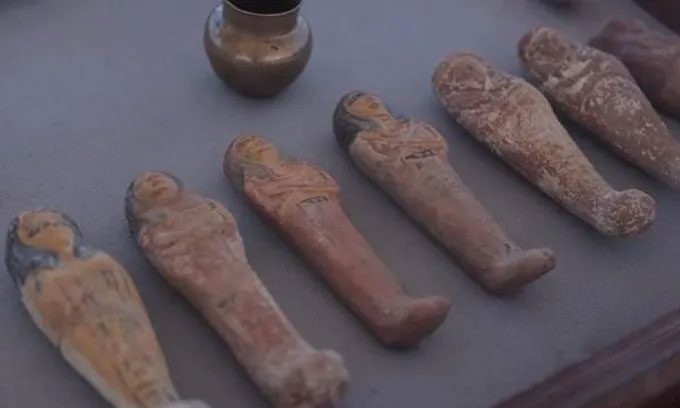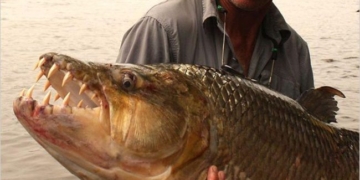The Egyptian archaeological team working in the Al-Ghoreifa area since 2017 has uncovered a cemetery for senior officials and priests from the New Kingdom, dating between the 16th and 11th centuries BC.
On October 15, the Egyptian Ministry of Tourism and Antiquities announced detailed information about several new discoveries in the Al-Ghoreifa area of Tuna Al-Gabal archaeological site in Minya Province.

Egypt has announced details about several new discoveries in the Al-Ghoreifa area. (Source: Arab News).
According to a reporter in Cairo, during a press conference, Mostafa Waziri, the Secretary-General of the Supreme Council of Antiquities in Egypt, stated that the archaeological delegation working in the Al-Ghoreifa area since 2017 has uncovered a cemetery for senior officials and priests from the New Kingdom, which spans the 16th to 11th centuries BC.
This discovery also includes 25,000 statues depicting ancient Egyptian deities and small figurines (ushabti) buried with the deceased, crafted from faience.
Additionally, a collection of glass vases, ornaments, amulets, stone and wooden coffins containing mummies has been excavated, along with a well-preserved papyrus scroll measuring between 3.96m and 4.57m, which contains text from the Book of the Dead. This papyrus will be transported to the Grand Egyptian Museum for public display.
Waziri noted that preliminary investigations revealed that part of this cemetery had been reused during the Late Period, with thousands of amulets, ushabti figurines, statues, and coffins containing mummies from that era being brought to light.

This discovery also includes 25,000 statues depicting ancient Egyptian deities. (Source: Arab News)
The Supreme Council of Antiquities in Egypt initiated excavations at the Al-Ghoreifa site under Waziri’s direction in 2017.
The New Kingdom cemetery features rock-cut tombs with wooden and stone coffins containing the mummies of high-ranking officials and priests from ancient Egypt.
The Al-Ghoreifa area in Minya was discovered in 1925 and is renowned for its archaeological discoveries, including 35 tombs, 90 coffins, and approximately 10,000 statues.


















































